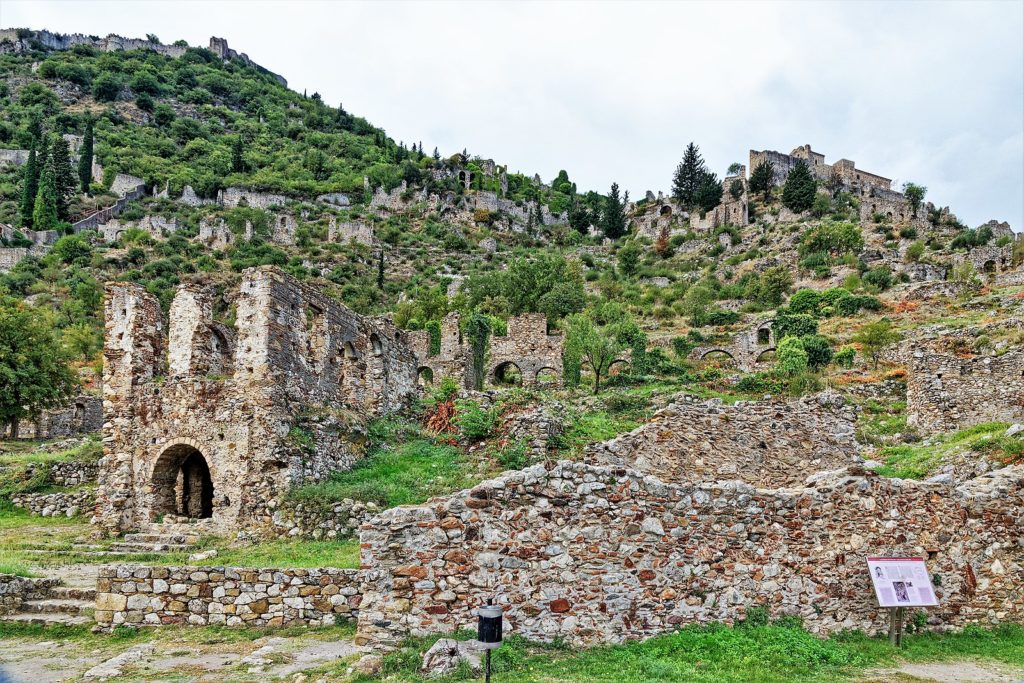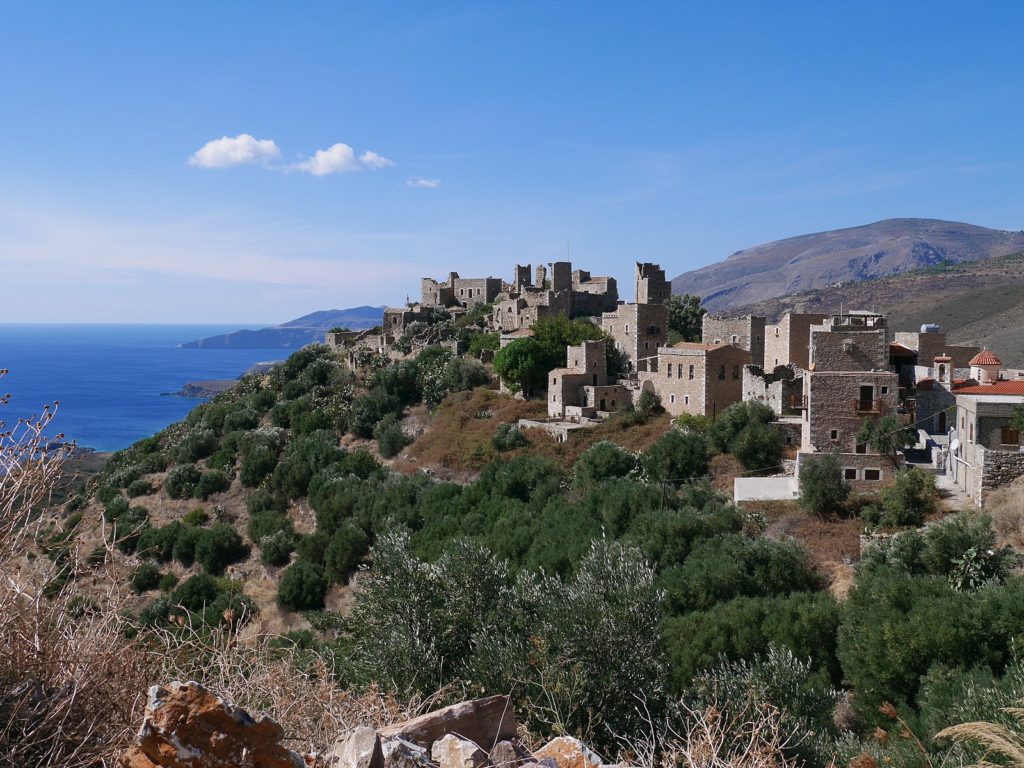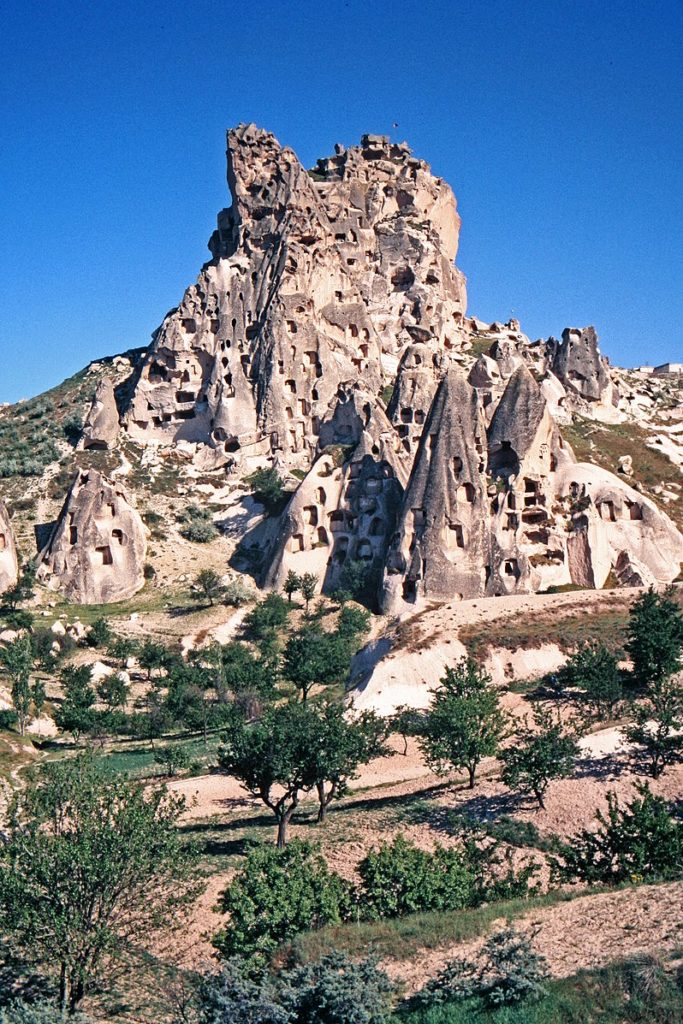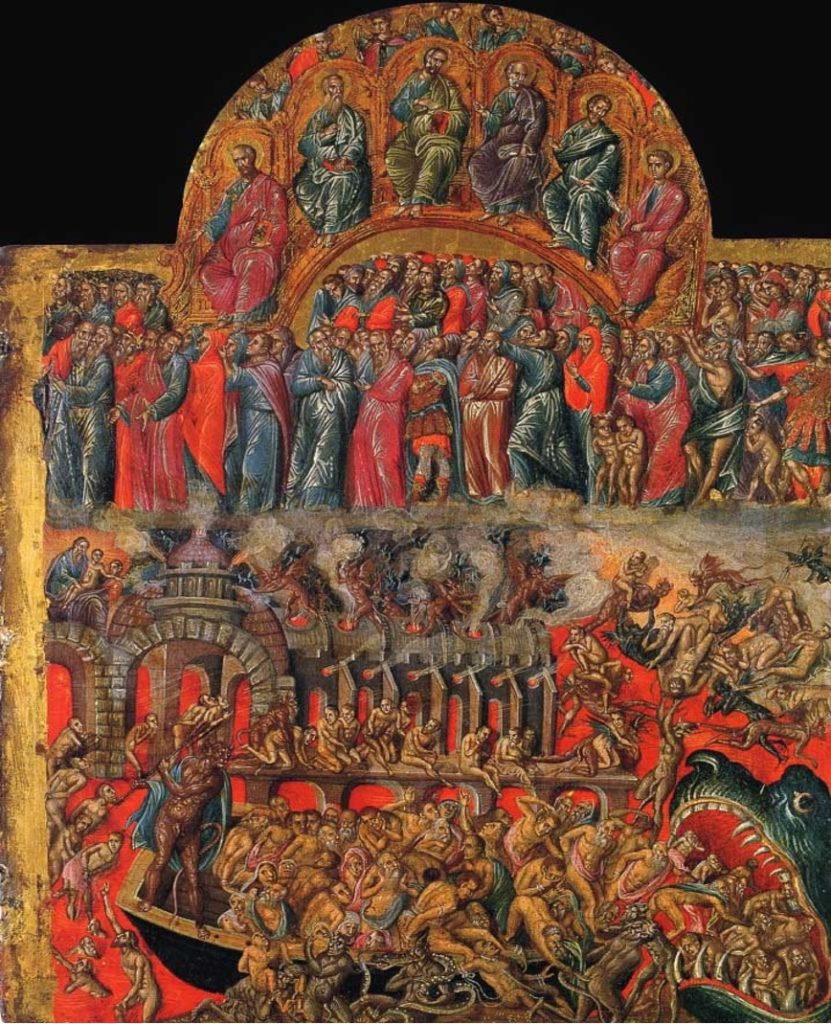To the best of my knowledge, no serious historian or theologian working over the last century has been willing to date a definitive schism between the current Catholic and Eastern Orthodox churches to the year 1054. This raises some obvious questions: what marks a schism in the first place? When did such a division occur between these two ecclesial bodies? And the topic partially addressed in this blog post: how did the year 1054 rise to such prominence that it appears in virtually every high school-level world history textbook in the present day?
It might be helpful to clarify what happened during the Latin legation to Constantinople in 1054. After a mutually unsatisfactory meeting and some debates over issues of liturgical and church disciplinary practice, the Latin legates excommunicated the patriarch of Constantinople, Michael Keroularios, but the expressly excluded the Eastern Roman emperor at the time, Constantine X Monomachos, as well as the city in general, from this breach in communion [1]. Patriarch Michael responded by convening a council to excommunicate the legates personally, but he took great pains to avoid condemning the bishop of Rome, on the grounds that the legates were imposters who hadn’t been sent by the pope at all. Still less was the whole of the Latin Church implicated in the Greek conciliar statement. It is abundantly clear from the surviving documents that no general division between the eastern and western halves of Chalcedonian Christianity was intended in the exchange of the excommunications, and there is no evidence from the time of the event itself that any such division was achieved.
This is confirmed by sources and events in the years immediately following 1054. In the immediate aftermath, Patriarch Michael Keroularios dispatched letters to the other eastern patriarchs complaining about the legates and about Latin liturgical and ritual practices, but he does so without any notion of a break in communion with the whole of western Christianity. The encomium of Michael Psellos for Keroularios, who died in 1059, praises the late Patriarch’s resistance to the legates. Psellos, ever philosophically-minded, focused on the question of the filioque, which was, in fact, one of the issues least discussed by the respective parties in 1054 itself (rather, they were concerned with whether bread for the Eucharist should be leavened, whether priests could be married, etc.). While admitting that Old and New Rome were in disagreement, and that the Roman position was “impious,” there is again no indication of a formal split in communion [2]. In another example a few years later, this time primarily from Latin sources concerning the great pilgrimage of Gunther of Bamberg, we are told that the Greeks were excessively proud in their dealings with the pilgrims (not an uncommon complaint), but not that they considered each other to be heretics or schismatics [3].
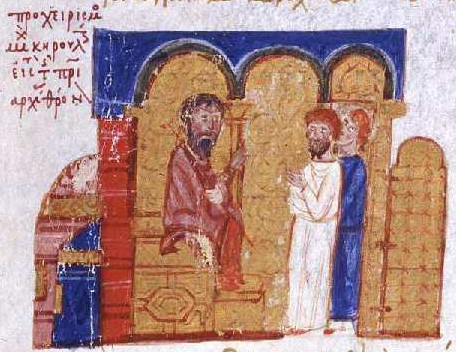
Unknown, 13th-century author, Public domain, via Wikimedia Commons
So, then, why the significance of this date? If not in the first-hand accounts, was any significance ascribed to the year 1054 in the works of later theologians and polemicists? I am preceded in this examination by an especially helpful article by Tia Kolbaba, a Byzantinist working at Rutgers, who examined twelfth-century sources with the expectation that the increased political tension between the Latin kingdoms and the Eastern Empire would evoke the historical example of Michael Keroularios in the theological literature [4]. Her conclusion is surprising: she was able to find no firmly-datable sources that considered the role of Michael Keroularios in the schism at all, and only a handful of short texts plausibly belonging to the twelfth century that mention him in passing. In the latter group, there is an interpolation in the history of Scylitzes, a single text in Vat. grec. 2198, a paragraph attributed to a certain Nicetas the Chartophylax, and a handful of anonymous texts collected by Hergenröther. This last item, edited under the collective title “Opuscula de origine schismatis,” is the most substantial of these, and even these short texts mention the role of Keroularios in conflicting terms and only in passing, at the end of rather confused accounts about the supposed errors of the Church of Rome [5].
In virtually all of these texts, the cause of the schism (which is fully recognized by the twelfth century) is attributed to the Latins’ mistaken Trinitarian theology, and specifically the question of the filioque. Although it does get mentioned, much less attention is given to the question of (un)leavened bread, a complete reversal of the 1054 conflict in which ritual questions were given pride of place. This change of emphasis leads most, if not all, of these later commentators to draw upon source material from an earlier rupture between Rome and Constantinople: the ninth-century Patriarch Photios, although he did eventually restore communion with the See of Rome, left behind substantial writings and a strong tradition of critiquing the Latin position, especially in terms of its Trinitarian theology. And it is primarily to Photios, rather than to Keroularios, that later Greek church historians and polemicists turned.
And finally, it appears that this interpretation persisted into the early modern period, even among Greek clergy sympathetic to the Roman position. John Plousiadenos, a fifteenth-century Cretan Byzantine-rite priest in union with the Church of Rome, appears content to attribute the fundamental basis of the schism to Photios, whom he described as “the very maker and the demiurge of the schism and the division” [6]. Charles Yost, a fellow graduate of the Medieval Institute, pointed out in his 2019 dissertation that the historiography of Plousiadenos concerning the schism, as well as that of other high-profile Greek churchmen of his time, was rather garbled, with different authors presenting conflicting accounts of whether Photios, for example, was ever personally restored to communion with Rome. In nearly all accounts, however, Keroularios is conspicuous by his absence: Plousiadenos says nothing about him at all, and Manuel Kalekas, another unionist, downplays his role [7]. At the end of the Middle Ages, then, the Great Schism, to the extent that the Greeks were willing to date it at all, happened in the ninth century, and the examples of intercommunion in the centuries following were, ultimately, just failed attempts at reunion.
So where does this leave our starting question, and can we trace any part of the modern prominence given to the date 1054 to the Constantinopolitan/Greek historical or theological tradition? I think that the answer is no. None of the Greek sources following the events themselves are willing to date a definitive schism to that year. At most, the actions of Michael Keroularios are a (small) episode in a series of conflicts with the Church of Rome that began at least two centuries earlier. Otherwise, his name and his role are omitted entirely from the discourse of later commentors. I have found nothing akin to the modern celebrity given the 1054 conflict until the writings of the Athonite Kollyvades fathers around the turn of the nineteenth century. Other than that, it only within the Latin medieval tradition that we can possibly find a substantial reception of 1054. And these both are very much topics for separate posts.
Nick Kamas
PhD in Medieval Studies
University of Notre Dame
[1] The best edition for the documents cited here in relation to the 1054 legation remains Cornelius Will, ed., Acta et Scripta quae de controversiis ecclesiae graecae et latinae saeculo undecimo composita extant (Leipzig: N. G. Elwert, 1861).
[2] K. N. Sathas, ed., Μεσαιωνική Βιβλιοθήκη Δ‘ (Athens: Koromela, 1874), 348. “Στασιάζει πρὸς τὴν νεωτέραν Ρώμην ἡ πρεσβυτέρα, οὐ περὶ μικρῶν οὐδὲ παρορᾶσθαι ἀξίων, ἀλλὰ περὶ τοῦ πρώτου λόγου τῆς εὐσεβείας, καὶ τῆς περὶ τῆν ἁγίαν τριάδα θεολογίας […].”
[3] Annales Altahenses maiores, ed. altera, ed. E. L. B. von Oefele, MGH SS Rer. Germ. 4 (Hannover: impensis bibliopolii Hahniani, 1891), 67. “Constantinopolitanos vidimus [Latini episcopi] graece et imperialiter arrogantes.”
[4] Tia Kolbaba, “The Legacy of Humbert and Cerularius: The Tradition of the ‘Schism of 1054’ in Byzantine Texts and Manuscripts of the Twelfth and Thirteenth Centuries,” in Porphyrogenita: Essays on the History and Literature of Byzantium and the Latin East in Honour of Julian Chrysostomides” (Aldershot: Ashgate, 2003), 47-61.
[5] “Opuscula de origine schismatis,” ed. J. Hergenröther in Monumenta graeca ad Photium ejusque historiam pertinentia, (Regensburg: G.J. Manz, 1869). The first of these texts is unusual in reporting (inaccurately) that Michael Keroularios excommunicated the whole of the Latin church (p. 163), but this is corrected by the second text, which follows Keroularios’s own account that Latin legation had been tampered with for political ends (p. 170). The third text does not mention him at all.
[6] Charles Yost, “The Thought and Ministry of a ‘Unionist Priest’ (ἙΝΩΤΙΚῸΣ ἹΕΡΕΎΣ): John Plousiadenos (†1500), the Council of Florence, and the Tradition of Byzantine Unionism” (Ph.D. Diss., University of Notre Dame, 2019), 649, esp. n. 480.
[7] Ibid., pp. 672, 674.

